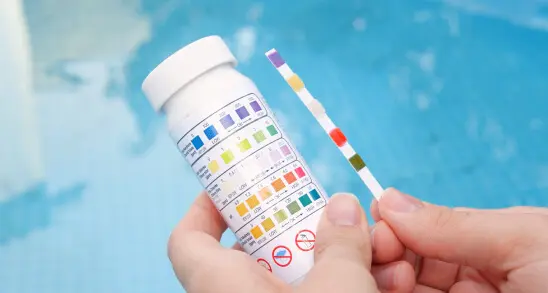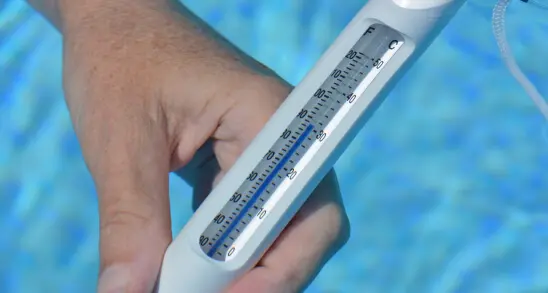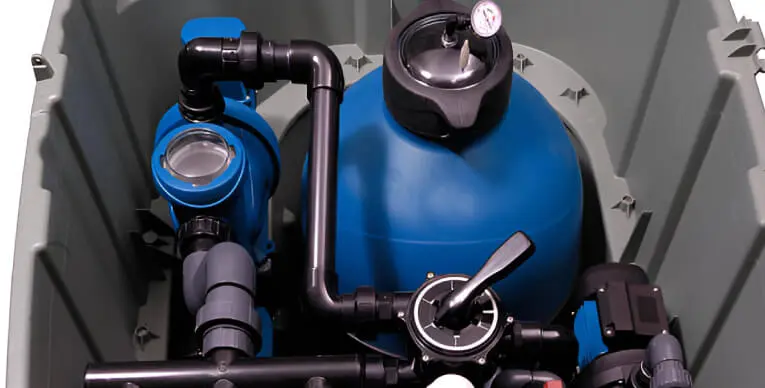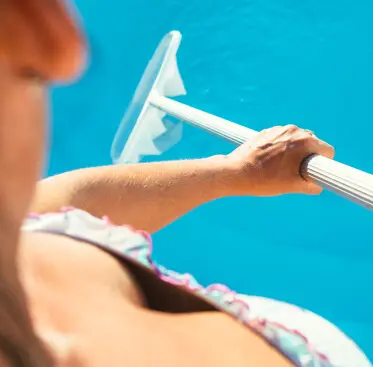San Antonio’s unique climate presents both opportunities and challenges for pool owners.
With its hot, sunny summers and mild winters, maintaining a swimming pool in San Antonio requires specific strategies to keep your pool in pristine condition year-round. This guide will provide you with essential tips and best practices for maintaining swimming pools in San Antonio, ensuring that your backyard oasis remains inviting and enjoyable.
1. Regular Cleaning and Skimming
San Antonio’s climate means plenty of sunshine, which encourages algae growth and can result in leaves and debris accumulating in your pool. To keep your swimming pool in San Antonio looking its best, you should:
- Skim the Surface: Use a skimmer net to remove leaves, bugs, and other debris from the surface of the water daily.
- Brush the Walls and Floor: Regularly brush the pool’s walls, steps, and floor to prevent algae buildup and maintain a clean appearance.
- Vacuum the Pool: Depending on usage and debris levels, vacuum the pool weekly to remove dirt and particles that settle at the bottom.


2. Maintaining Proper Water Chemistry
The high temperatures in San Antonio can affect the chemical balance of your pool water. To ensure your swimming pool remains healthy and safe, focus on:
- Checking pH Levels: Test the pool water at least once a week to ensure the pH level is between 7.2 and 7.6. Imbalanced pH can lead to irritation and equipment damage.
- Adjusting Chlorine Levels: Maintain a chlorine level of 1.0 to 3.0 ppm (parts per million) to keep the water sanitized and free of harmful microorganisms.
- Balancing Alkalinity and Calcium Hardness: Regularly check and adjust the total alkalinity (80-120 ppm) and calcium hardness (200-400 ppm) to prevent scaling or corrosion.


3. Managing Pool Temperature
With San Antonio’s hot summers, maintaining a comfortable pool temperature can be challenging. Consider these tips to manage your pool’s temperature:
- Use a Pool Cover: During the day, use a pool cover to reduce heat loss and keep the water temperature stable. Covers also help prevent debris from entering the pool.
- Install a Pool Heater: For cooler months or to maintain a consistent temperature, consider installing a pool heater that’s suitable for the San Antonio climate.
4. Protecting Against Sun Damage
The intense sun in San Antonio can cause damage to pool surfaces and equipment. To protect your swimming pool:
- Use UV-Resistant Products: Choose pool equipment and accessories designed to withstand UV rays, including pool liners and covers.
- Regularly Inspect Equipment: Check your pool’s equipment, such as pumps and filters, for signs of wear or damage caused by prolonged sun exposure.

5. Preventing Algae Growth
The warm climate in San Antonio can promote algae growth, so prevention is key:
- Maintain Proper Circulation: Ensure your pool’s filtration system runs at least 8-12 hours a day to keep the water circulating and reduce algae growth.
- Shock the Pool: Regularly shock the pool with a high dose of chlorine to kill any algae or bacteria that may be present. This is especially important after heavy rains or high pool usage.
6. Handling Seasonal Changes
While San Antonio’s climate is relatively mild, there are still seasonal changes to consider:
- Spring and Summer: Increase your pool maintenance routine as the temperatures rise and debris levels increase. Regularly check and clean the pool to handle higher usage and environmental factors.
- Fall: Remove leaves and other debris more frequently as trees shed their leaves. Adjust your chemical levels to account for changes in water temperature and usage.
- Winter: Even though winters are mild, continue basic maintenance to prevent algae growth and equipment damage. Use a pool cover to protect the water from debris and reduce evaporation.
. Inspecting and Maintaining Pool Equipment
Proper maintenance of your pool equipment ensures efficient operation and longevity:
- Clean the Filter: Regularly clean or replace the pool filter to maintain optimal water flow and filtration. This helps in reducing the strain on your pool pump and improves water clarity.
- Check the Pump and Skimmer: Ensure the pool pump and skimmer are functioning correctly and repair any leaks or malfunctions promptly.

8. Addressing Water Levels
San Antonio’s heat can lead to water evaporation, affecting your pool’s water level:
- Monitor Water Levels: Regularly check the water level and top off with fresh water as needed. Low water levels can damage the pool pump and reduce filtration efficiency.
- Use a Water Leveler: Consider installing an automatic water leveler to maintain consistent water levels and reduce the need for frequent manual adjustments.
9. Hiring Professional Help
For more complex maintenance tasks or if you encounter issues beyond your expertise:
- Consider Professional Services: Hiring a professional pool service in San Antonio can help with routine maintenance, repairs, and troubleshooting. Professionals have the expertise to handle more complicated issues and ensure your pool remains in top condition.
10. Staying Informed and Proactive
Finally, staying informed about best practices and proactive maintenance can help you avoid common problems:
- Educate Yourself: Stay up-to-date with the latest pool maintenance techniques and products suitable for San Antonio’s climate.
- Be Proactive: Regularly perform maintenance tasks and address issues as they arise to prevent larger problems and costly repairs.

Maintaining a swimming pool in San Antonio requires attention to detail and regular upkeep due to the region’s unique climate. By following these tips, you can ensure that your pool remains clean, functional, and enjoyable throughout the year. For expert assistance with your pool maintenance needs, contact Gavian Pools and Patios today. Our team of professionals is here to help you keep your backyard oasis in perfect condition, no matter the season.